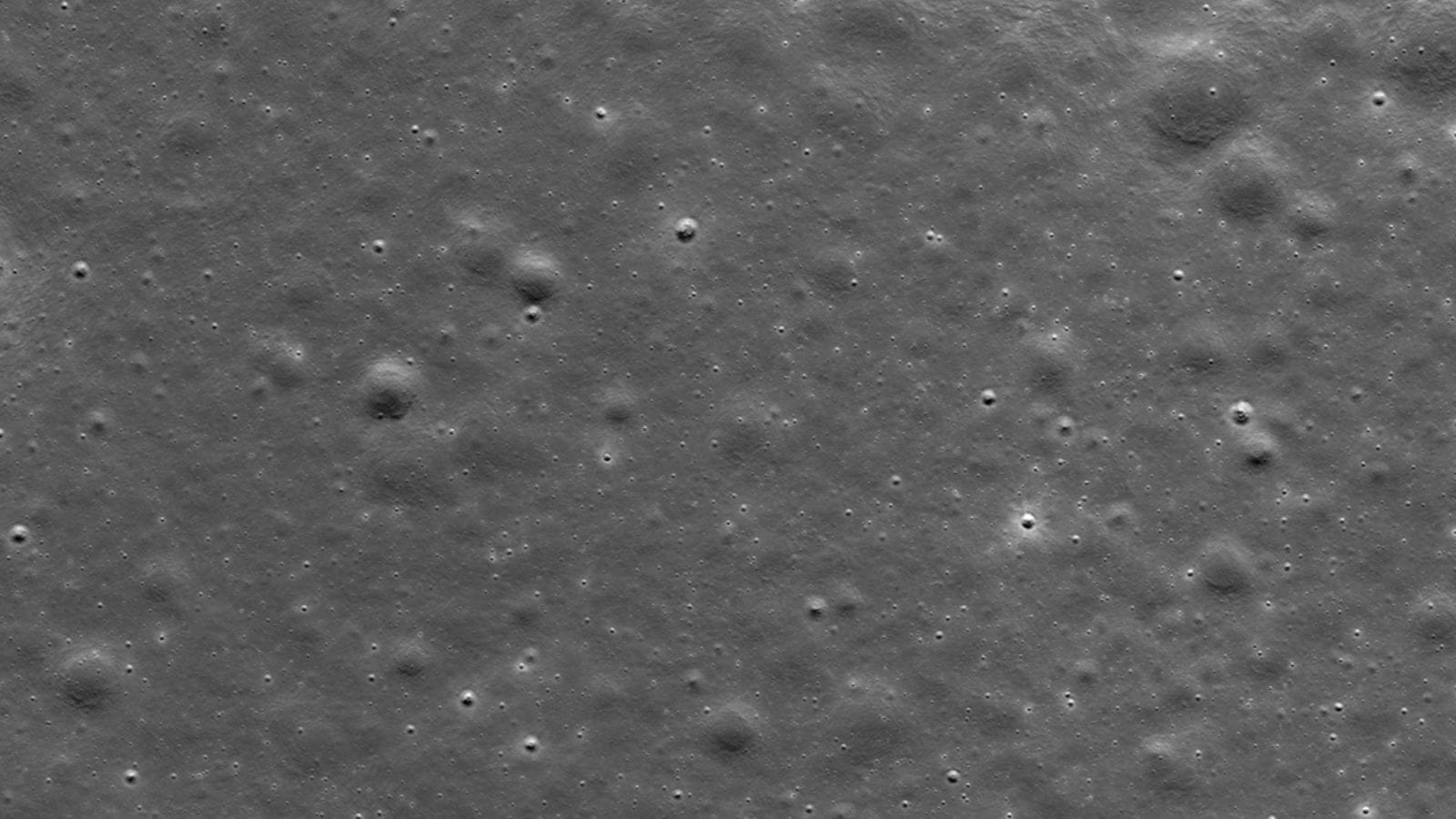NASA’s Lunar Reconnaissance Orbiter (LRO) has taken a clear image showing the crash site of Japan’s Resilience moon lander, built by Tokyo-based company ispace. The lander tried to touch down on June 5, in the Mare Frigoris region of the Moon but lost contact during descent. The image captured by NASA shows a dark spot with a light ring around it, likely caused by the hard impact and moon dust due to the disturbance by the Japanese lander. This is ispace’s second failed attempt to land on the Moon.
The Resilience spacecraft was trying to land safely in Mare Frigoris, an area of the Moon that has been formed by ancient lava flows. But soon after starting its landing, ispace lost contact with the lander. Later, it was confirmed that the lander had crashed to the surface of the Moon.
The image captured by NASA’s LRO shows a dark spot (called regolith) where the spacecraft hit the Moon and disturbed its surface. The light ring around the crash site likely came from small particles spread out by the impact. Scientist Mark Robinson confirmed that the crash happened about 2.4 kilometres away from the planned landing spot.
A small micro-rover named Tenacious, made by ispace’s European team, was also lost in the crash. It also carried a small piece of artwork called “Moonhouse” created by Swedish artist Mikael Genberg. The artwork was a tiny red-and-white model of a Swedish-style house, meant to represent human creativity and the idea of living on the Moon. This artwork was part of a symbolic mission that blended space exploration with art.
Sadly, the rover crashed during its mission, and Moonhouse now lies amidst the wreckage.
Second setback for ispace
This was ispace’s second failed Moon mission. Its first lander also crashed in April 2023. Despite these failures, ispace is still one of the few private companies working to explore the Moon. The crash shows how hard space travel is, especially on the Moon, where everything must work perfectly.
While the crash is a setback, NASA’s images of the site provide useful data to ispace to help understand what went wrong with its lunar lander. As both private companies and national space agencies plan more Moon missions, such information could be potentially important for learning, improving, and being prepared for future landings on the lunar surface.
© IE Online Media Services Pvt Ltd




Average Rating